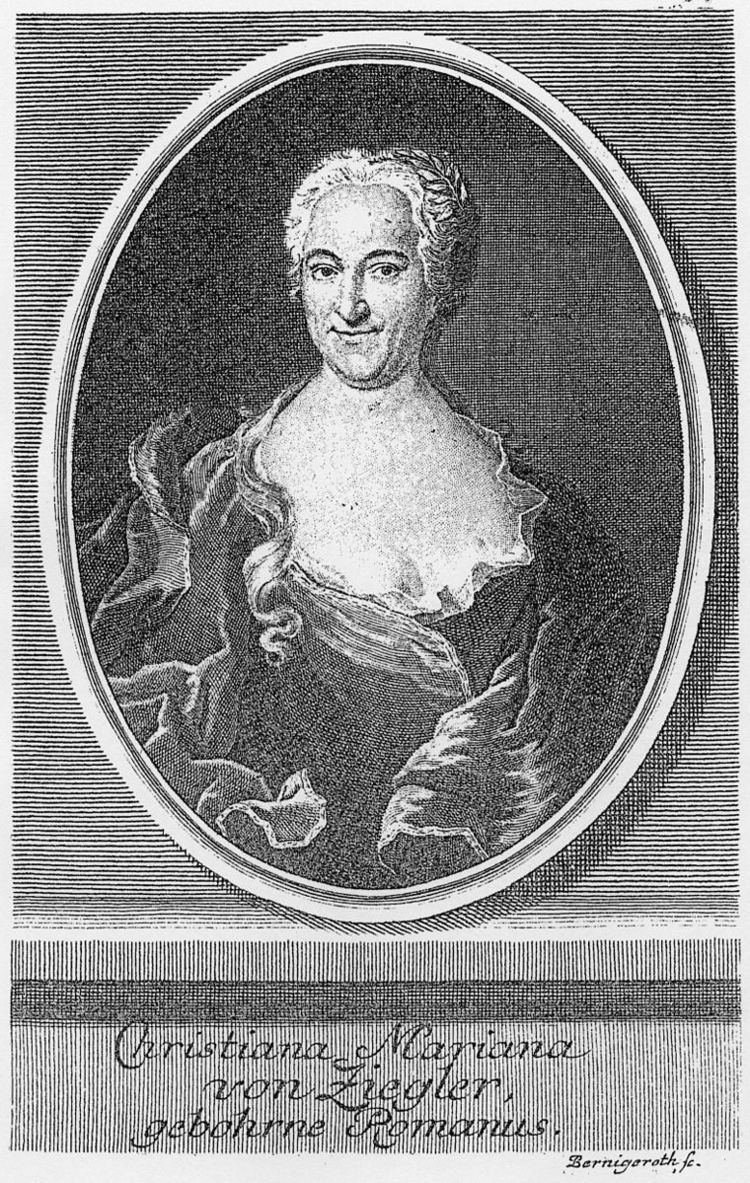Movements 6 | ||
 | ||
Cantata text | ||
Es ist ein trotzig und verzagt Ding (There is something defiant and fainthearted), BWV 176, is a church cantata by Johann Sebastian Bach. He composed it in Leipzig for Trinity Sunday on a text by Christiana Mariana von Ziegler and first performed it on 27 May 1725, concluding his second year of cantata compositions in Leipzig.
Contents
History and words
Bach composed the cantata during his second year in Leipzig for Trinity. The prescribed readings for the Sunday were from the Epistle to the Romans, reflecting "depth of wisdom" (Romans 11:33–36), and from the Gospel of John, the meeting of Jesus and Nicodemus (John 3:1–15).
In his second year in Leipzig, Bach composed chorale cantatas between the first Sunday after Trinity Sunday and Palm Sunday, but for Easter returned to cantatas on more varied texts, possibly because he lost his librettist. Nine of his cantatas for the period between Easter and Pentecost are based on texts of Christiana Mariana von Ziegler, including this cantata. He later inserted most of them, including this one, in his third annual cantata cycle.
Ziegler took the idea from the Gospel that Nicodemus came to speak with Jesus at night, possibly afraid to be seen with him, and deducted thoughts about the timidity of Christians in general. She opened her text with a paraphrase from Jeremiah, describing the heart of man as "trotzig und verzagt", the conflicting attributes rendered for example as "daring and shy" or "contrary and despairing" (Jeremiah 17:9). Literally "trotzig" means "defiant", "verzagt" means "despondent". The poet continued with a paraphase of Nicodemus' words that nobody could act as Jesus if God was not with him. She used the eighth stanza of Paul Gerhardt's hymn "Was alle Weisheit in der Welt" (1653) as a closing chorale, sung to the same melody as "Christ unser Herr zum Jordan kam".
Bach first performed the cantata on 27 May 1725. It was the conclusion of Bach's second year of cantata compositions in Leipzig.
Scoring and structure
The cantata is scored for three vocal soloists (soprano, alto, and bass), a four-part choir, two oboes, oboe da caccia, two violins, viola, and basso continuo. The work has six movements, as follows:
- Chorus: Es ist ein trotzig und verzagt Ding
- Recitative (alto): Ich meine, recht verzagt
- Aria (soprano): Dein sonst hell beliebter Schein
- Recitative (bass): So wundre dich, o Meister, nicht
- Aria (alto): Ermuntert euch, furchtsam und schüchterne Sinne
- Chorale: Auf daß wir also allzugleich
Music
The opening chorus in C minor concentrates, without instrumental introduction, on a choral fugue. A complex theme illustrates both contrasting aspects that Jeremiah mentioned of the human heart, rendering "trotzig" (defiant) twice, once in a repeated high note reached by a triad fanfare, then in an upward run with a surprising modulation, whereas "verzagt" (timid) appears as a sighing motif in chromatism. The strings accompany "trotzig" marked forte, "verzagt" piano, while the oboes double the voices. Klaus Hofmann notes: "Bach has taken greater pleasure in depicting defiance than in representing timidity (and has thus departed to some extent from his librettist's intention). John Eliot Gardiner translates the text as "There is something stubborn (or defiant or wilful) and fainthearted (or disheartened or despairing) about the human heart", describes the movement as a "dramatic antithesis between headstrong aggression and lily-livered frailty", and wonders "whether this arresting comment on the human condition reflected Bach's own views".
The soprano aria "Dein sonst so hell beliebter Schein" (Your dear bright light) is in contrast a "light-footed" gavotte, sometimes without continuo.
In the following recitative, Nicodemus speaks for the Christian. Bach added a quotation from the Gospel to Ziegler's printed text, "for whosoever believes in Thee, shall not perish" and stressed it by setting it as an arioso.
In the alto aria, an unusual obbligato of three oboes in unison, including one oboe da caccia, alludes to the Trinity that is celebrated.
The closing chorale is a four-part setting of the archaic modal melody of "Christ unser Herr zum Jordan kam". At the very end Bach adds two measures at a higher pitch on the words "ein Wesen, drei Personen" (one Being, three persons), reflecting the Trinity and a "remoteness of God from his relationship to humankind". Gardiner concludes that Bach "signs off his second Leipzig cycle with this cantata crammed with provocative thoughts and musical exegesis.
